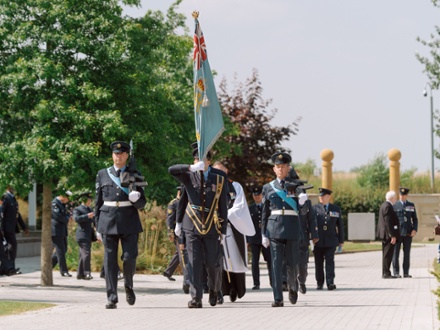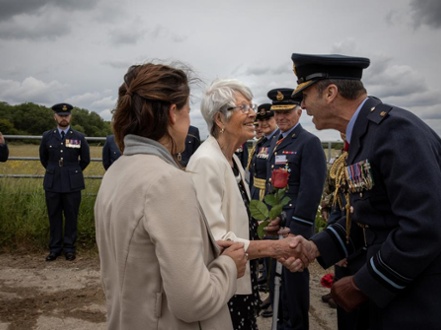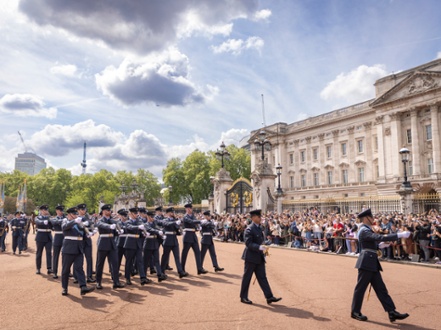On Saturday 29th June, as the Royal Auxiliary Air Force marks 100 years of Volunteer Reserve service within the RAF, a Piper from 502 (Ulster) Squadron led representatives from RAF Leeming based 607 (County of Durham) Squadron, 609 (West Riding) Squadron and 3 RAF (Reserves) Police Squadron from RAF Honington as they paraded at the Stonefall Cemetery Harrogate to conduct a commemorative service.
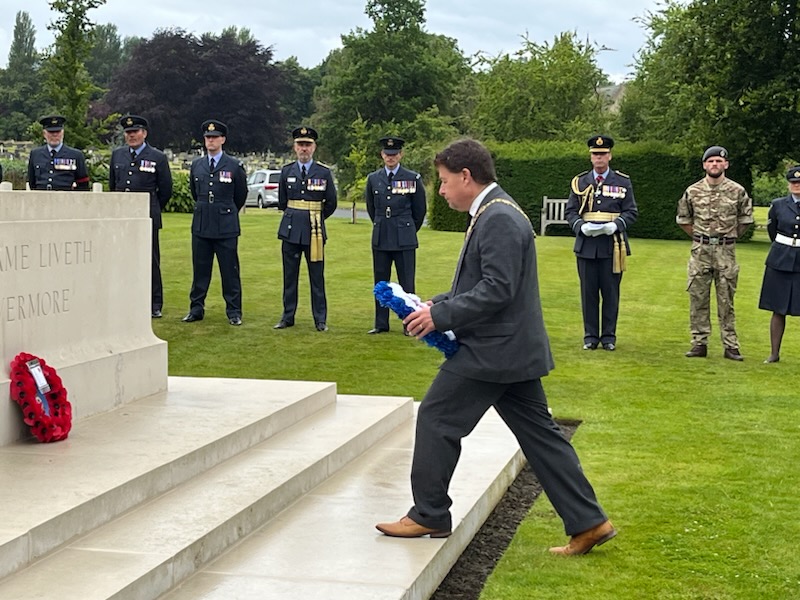
In the presence of Air Vice Marshal Munro, Commandant General of the Royal Auxiliary Air Force, and Charter Mayor of Harrogate Chris Aldred, the event paid tribute to the thousands of men and women who have served with the RAF as volunteer reserves over the last 100 years on operations all over the world and honoured those who lost their lives in the line of duty.
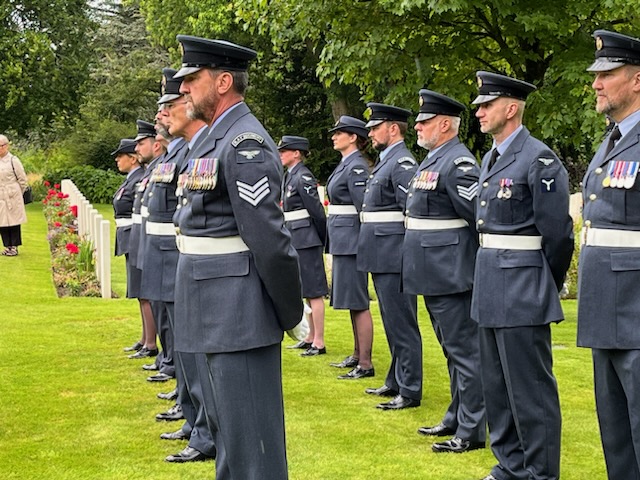
A trumpeter from the Band of the Royal Auxiliary Airforce sounded the Last Post before Air Vice Marshal Munro and Charter Mayor Aldred laid wreaths on the memorial in the immaculate Commonwealth War Graves Commission (CWGC) area of Stonefall Cemetery. After the ceremony Commandant General and the Charter Mayor signed the CWGC visitors book.
The Auxiliary Air Force (AAF) was established in 1924 in order to give civilians the opportunity to learn to fly bi-planes and train to contribute to the defence of Britain. During 1938 and 1939, with the threat of war looming, the RAF Volunteer Reserve was set up to be able to recruit and large numbers of personnel quickly who would serve for the duration of hostilities. Many of those “RAF VRs” were posted to AAF squadrons in time for the Battle of Britain.
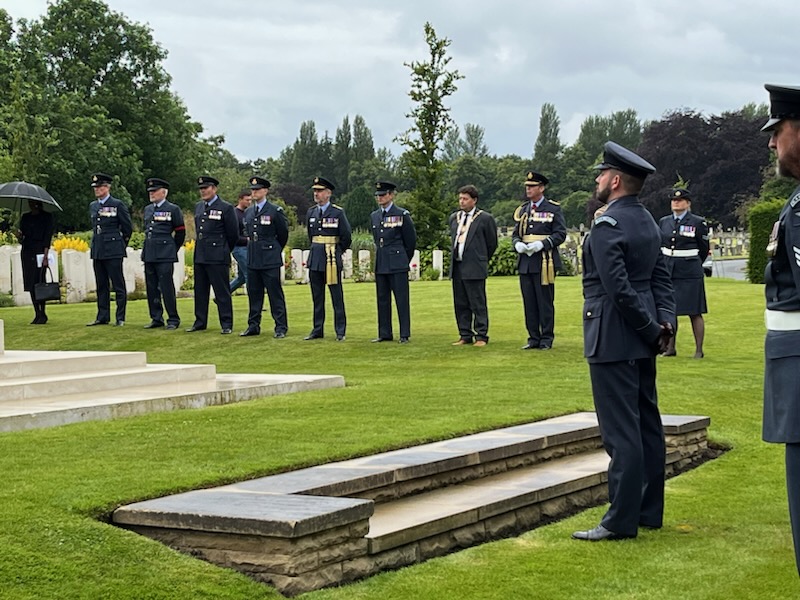
The AAF provided a quarter of the squadrons which fought in the Battle of Britain, accounting for a third of the aerial combat victories. The AAF squadrons went on to distinguish themselves in wider theatres of the war including campaigns in Malta, the North African desert, the Battle of the Atlantic, and the Far East. They then played a vital role on D-Day and on through western Europe to the war’s end. The RAF went to war with 200,000 personnel of whom 20,000 were RAF Volunteer Reserves and, of the 12,600 officers, 3000 of them were from the AAF.
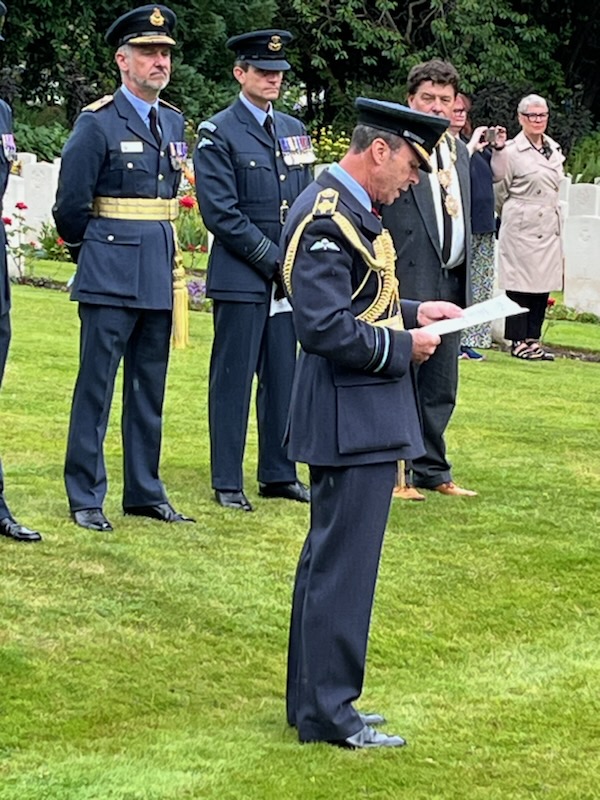
By the war’s end 41,000 RAF Volunteer Reserve personnel and more than 1000 AAF personnel had been killed in action. For the invaluable contribution to the war effort made by the AAF, in 1947 His Majesty King George VI bestowed the prefix Royal on the service title. The Royal Auxiliary Air Force (RAuxAF) has been supporting the operational work of the RAF ever since and has expanded the range of trades civilians can join to work in – from logistics to catering, from motor transport to force protection, from intelligence to helicopter support, people today join the RAuxAF as part time volunteer reserves to learn these skills and grow their own life experience.
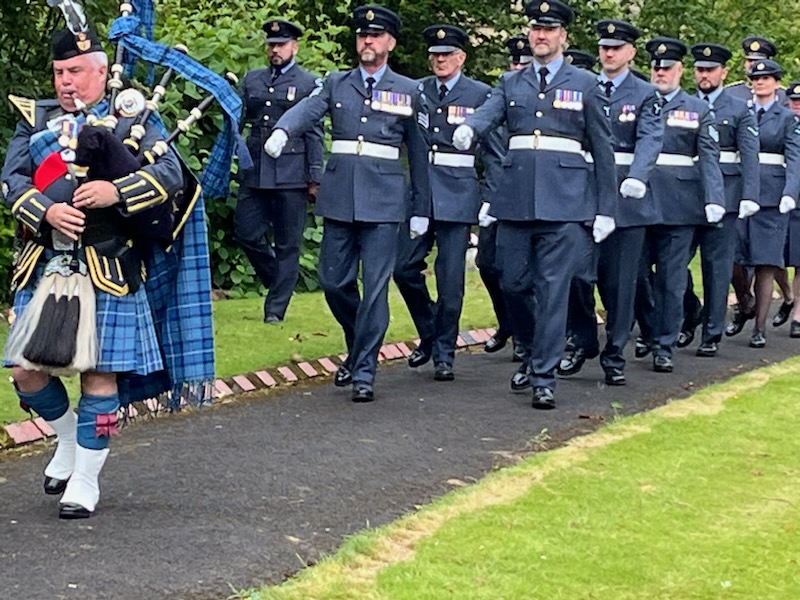
The RAuxAF is also providing highly specialised support to the RAF by recruiting people with expertise from their civilian careers to serve in RAuxAF medical and media units, intelligence and cyber units and now even in dedicated space units offering technical support to UK Space Command for the protection of the UK’s space interests - a far cry from the bi-planes people joined to fly 100 years ago.






